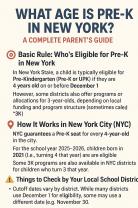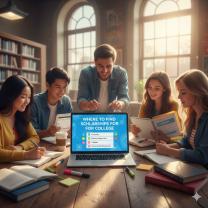How to learn web design?
Learning web design involves a combination of theory, practical application, and staying up-to-date with the latest industry trends and technologies. Here's a step-by-step learning path along with resources for each stage:
1. Understanding the Basics:
- HTML and CSS:
- Resource: MDN Web Docs - HTML
- Resource: MDN Web Docs - CSS
2. Responsive Web Design:
- Media Queries:
- Flexible Grids and Images:
- Resource: MDN Web Docs - Responsive design
3. Basic JavaScript:
- Introduction to JavaScript:
- Resource: MDN Web Docs - JavaScript Guide
4. Version Control and Basic Terminal Usage:
- Git and GitHub:
- Resource: GitHub Learning Lab
5. Design Principles:
- Color Theory, Typography, and Layout:
- Resource: Design Basics
- Visual Hierarchy:
6. User Experience (UX) Design:
- Introduction to UX:
- Resource: Nielsen Norman Group - Usability 101
- Wireframing and Prototyping:
- Resource: Balsamiq - Wireframing Basics
7. Advanced JavaScript and DOM Manipulation:
- ES6+ Features:
- Resource: ES6 Features
- DOM Manipulation:
- Resource: MDN Web Docs - Introduction to the DOM
8. CSS Frameworks:
- Bootstrap or Tailwind CSS:
- Resource: Bootstrap Documentation
- Resource: Tailwind CSS Documentation
9. Build Tools and Workflow:
- Webpack or Parcel:
- Resource: Webpack Documentation
- Resource: Parcel Documentation
10. Web Accessibility:
- Introduction to Accessibility:
11. JavaScript Framework (Optional):
- React, Angular, or Vue.js:
- Resource: React Documentation
- Resource: Angular Documentation
- Resource: Vue.js Documentation
12. Portfolio Development:
- Create Real Projects:
- Apply your skills to real-world projects and build a portfolio.
- Online Portfolio Platforms:
13. Stay Updated:
- Follow blogs, podcasts, and forums for the latest web design trends and technologies.
- Resource: Smashing Magazine
- Resource: CSS-Tricks
14. Community Engagement:
- Join online communities to connect with other web designers and developers.
- Resource: Dev.to
- Resource: Stack Overflow
15. Continuous Learning:
- Web design is a continuously evolving field. Stay curious, explore new technologies, and never stop learning.
Remember, the key to learning web design is consistent practice and hands-on experience. As you progress through these steps, don't hesitate to take on projects that challenge you and allow you to apply what you've learned.
What are the effective methods or resources to gain expertise in web design?
There are many effective methods and resources available to gain expertise in web design, and the best approach depends on your learning style, budget, and desired level of skill. Here are some options to consider:
Formal Education:
- University degrees: Earning a Bachelor's or Master's degree in web design or a related field provides a strong foundation in design principles, technical skills, and industry knowledge. However, this can be a time and resource-intensive option.
- Bootcamps: Intensive bootcamps offer focused training in specific web design skills, such as front-end development or user interface (UI) design, often within a shorter time frame than university programs. This can be a good option for career changers or those seeking to quickly level up their skills.
- Online courses: Platforms like Coursera, Udemy, and Udacity offer a vast library of affordable online courses covering various web design topics, from introductory to advanced levels. This flexible option allows you to learn at your own pace and choose specific areas of interest.
Self-Directed Learning:
- Free resources: The internet is brimming with free learning resources like tutorials, blogs, YouTube channels, and documentation from software companies. Platforms like Mozilla Developer Network, W3Schools, and FreeCodeCamp offer comprehensive guides and interactive learning experiences.
- Personal projects: Build your own website or web app to put your skills into practice and experiment with different design techniques. This hands-on approach helps you learn by doing and build a portfolio of work to showcase your abilities.
- Open-source contributions: Contribute to existing open-source web projects on platforms like GitHub. This allows you to collaborate with other developers, learn from their code, and gain valuable experience working on real-world projects.
Community and Support:
- Design communities: Online forums, Discord servers, and local meetups connect you with other web designers to share knowledge, exchange feedback, and stay up-to-date on trends. Being part of a community can provide valuable support and inspiration.
- Mentorship: Find a mentor who is a more experienced web designer to guide you through your learning journey. They can offer personalized advice, help you avoid pitfalls, and connect you with valuable resources.
- Attend conferences and workshops: Immerse yourself in the web design world by attending industry conferences and workshops. These events offer opportunities to learn from experts, network with other professionals, and discover new tools and technologies.
Additional Tips:
- Stay focused: Choose a specific area of web design to specialize in, such as front-end development, UI/UX design, or back-end development. This allows you to develop deeper expertise and become more marketable.
- Practice consistently: Just like any skill, web design requires dedication and practice. Set aside time each day or week to work on your learning and projects, even if it's just for a short period.
- Don't be afraid to ask for help: The web design community is generally welcoming and supportive. Don't hesitate to ask questions, seek feedback, and learn from others' experiences.
Remember, the key to gaining expertise in web design is a combination of dedication, the right resources, and a passion for creating beautiful and functional user experiences. Choose the methods that best suit your learning style and personal goals, and keep pushing yourself to grow and explore new possibilities in the exciting world of web design.












